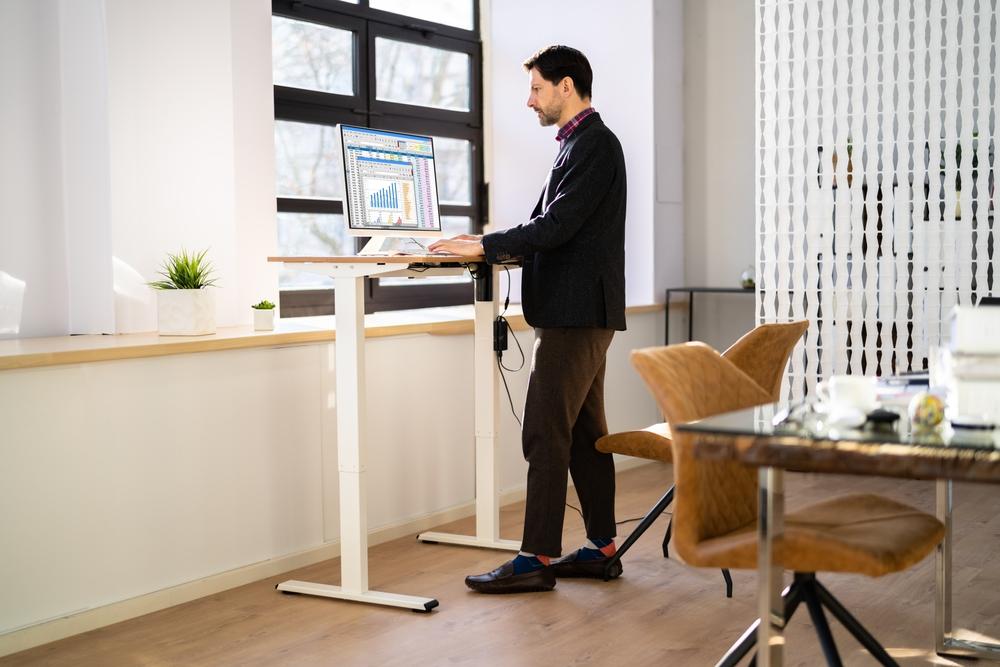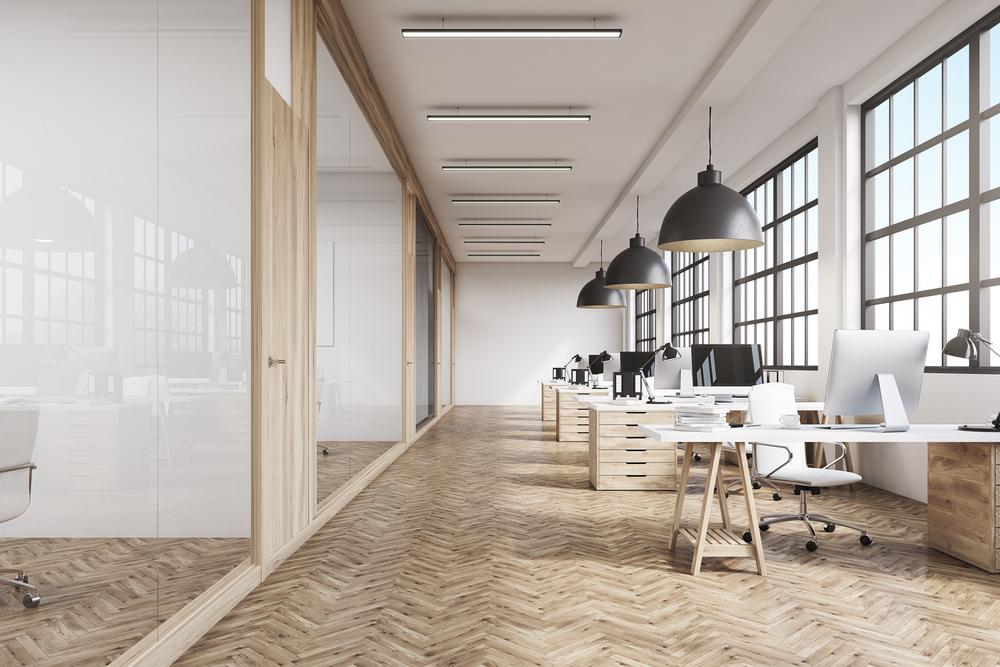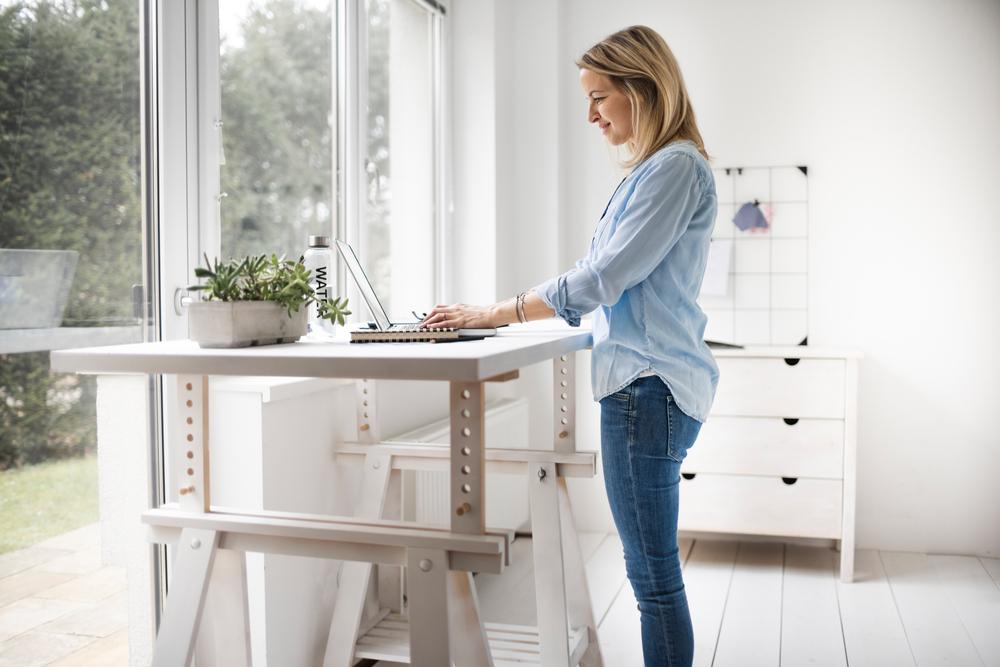I’ll be honest—when I first heard about standing desks, I wasn’t convinced. They seemed like just another trend. But dealing with heavy, traditional desks got me curious about why the debate between standing desk vs. regular desk is gaining so much attention. It made me question which option truly stands out when it comes to comfort, health benefits, and productivity.
As entrepreneurs, we know how important a good workspace is. The desk you choose can affect your focus, energy, and even creativity during the day. Let’s take a look and see which desk might be the best fit for you.
Pros and Cons of Each
Standing Desk

Pros:
- Health Benefits: One of the advantages of using standing desks is that standing burns approximately 50 more calories per hour in comparison to sitting. In the long run, it makes a significant difference.
- Energy Boost: Standing reduces the sluggish feeling that often comes from sitting for long hours. It can even help you skip that extra cup of coffee in the afternoon.
- Better Posture: The best thing is that when standing desks are adjusted properly, they help you to stand up straight.
Cons:
- Can Get Tiring: Don’t get me wrong, standing for too long does have its drawbacks. Standing too long can result in aches in the legs and feet.
- Adjustment Period: Transitioning to a standing desk can feel awkward at first. It requires changes to your work habits and body posture, and during this period, you might feel less productive..
- Cost: Standing desks are generally more expensive than normal desks which may cost you a basic one at $300 or more.
Regular Desk

Pros:
- Comfort: It’s what we are all familiar with. Long tasks require us to remain seated for most of the period.
- Cost Effective: Most probably, you already have one and it can be inexpensive.
- Promotes Focus: For tasks that need deep concentration, like writing or data analysis, sitting can be more practical and conducive to focus.
Cons:
- Health Risks: Sitting for long hours is linked to serious health problems, such as an increased risk of heart disease, obesity, and even early mortality.
- Posture Problems: Poor posture, like hunching over a desk, often leads to neck and back pain.
- Can Feel Tiring: Sitting for extended periods can drain your energy and leave you feeling sluggish.
Usage Patterns
Here’s the thing: no one should stand or sit all day. It’s all about balance.
As it pertains to me, I utilize the “50 – 50 rule”. That is clear when you look at my daily routine, which entails standing and sitting for a particular time period. If I begin with standing, I would stand for 30 minutes then sit for about 45 minutes before repeating the cycle.
And studies support this. Researchers recommend standing for about 15 minutes every hour. Incorporating even such minor changes in how you go about your daily chores can further, over time, improve how active and healthy you feel.
In case you have just begun using standing desks, go slow. Stand for shorter times at around 15 to 20 minutes before gradually moving higher. Don’t attempt to stand for 8 hours the very first time, it will make sure that your legs don’t feel sore the next day.
Common Desk Setups
Standing Desk Options
- Adjustable Desks: Being able to change positions with the crank or push of a button is an absolute level-up.
- Desk Converters: For those on a budget, you may want to consider a converter. It does exactly what a normal desk does, except might elevate your work area when needed.
- DIY Standing Desk: Are you looking for something that requires bravery, skill and maybe not a lot of money? Find plenty of books or tough boxes to raise your keyboard and monitor.
Regular Desk Essentials
- Ergonomic Chair: Your back will thank you for investing in a supportive chair designed for comfort and proper posture.
- Monitor Stand: Elevate your monitor to eye level to reduce neck strain and maintain an ergonomic viewing position.
- Keyboard and Mouse Placement: Ensure your elbows form a 90-degree angle while typing to promote comfort and prevent strain.
Additional Tips
- Invest in an Anti-Fatigue Mat: A mat used for standing desks can help alleviate the pressure put on feet and legs.
- Take Breaks: When standing or sitting, breaks are absolutely essential. Do not forget to move about once per hour. Stretch your cracked legs.
- Stay Active: Your whole desk arrangement ought to form part of a larger movement strategy. I keep dumbbells at the desk in case of trying out some arm exercises while on the break.
Overall Review
Both types of desks have their merits, and the choice ultimately depends on your budget, work requirements, and physical health.
If you’re working with a tight budget, sticking with a regular desk is perfectly fine. Just consider adding ergonomic enhancements like a quality chair or a monitor stand—small changes that can make a big difference in comfort and productivity.
On the other hand, if you’re ready to invest in your well-being, a standing desk could be transformative. Start gradually, adjusting your routine over time. In the long run, you may notice reduced back pain and increased energy levels, making it a worthwhile investment in your health.
The Bottom Line
Here’s what I thought about this: offices are not all created equal. Therefore, it is important to choose desks that give you comfort, boost your productivity and make you feel better.
For small business owners who are juggling a million things at once – your workspace needs to work for you and not against you. And so if you are one of those that like standing desks, regular desks or both of them then ensure that your setup is intentional. You will never regret it.
To learn more about how to create an office environment that fosters creativity and productivity, visit Zone of Genius. They provide great ideas for entrepreneurs.










